Table of Contents (click to expand)
The basilar membrane is a structural element located inside the cochlea that divides it into two sections: the scala media and the scala tympani. The basilar membrane is responsible for transforming sound waves into electrical impulses, which are then transmitted to the brain. The basilar membrane is also responsible for identifying the profile of the sound impinging on the ear.
The basilar membrane is an important component of the inner ear and is located inside the cochlea, which is moved by sound waves that fall on the ear. This delicate structure is critical for our sense of hearing.
Recommended Video for you:
The Inner Ear
Some of you may already know that the ear can be divided into three parts: the outer ear, middle ear and inner ear, all of which work in perfect synchronization to help us hear what is happening in the outside world.
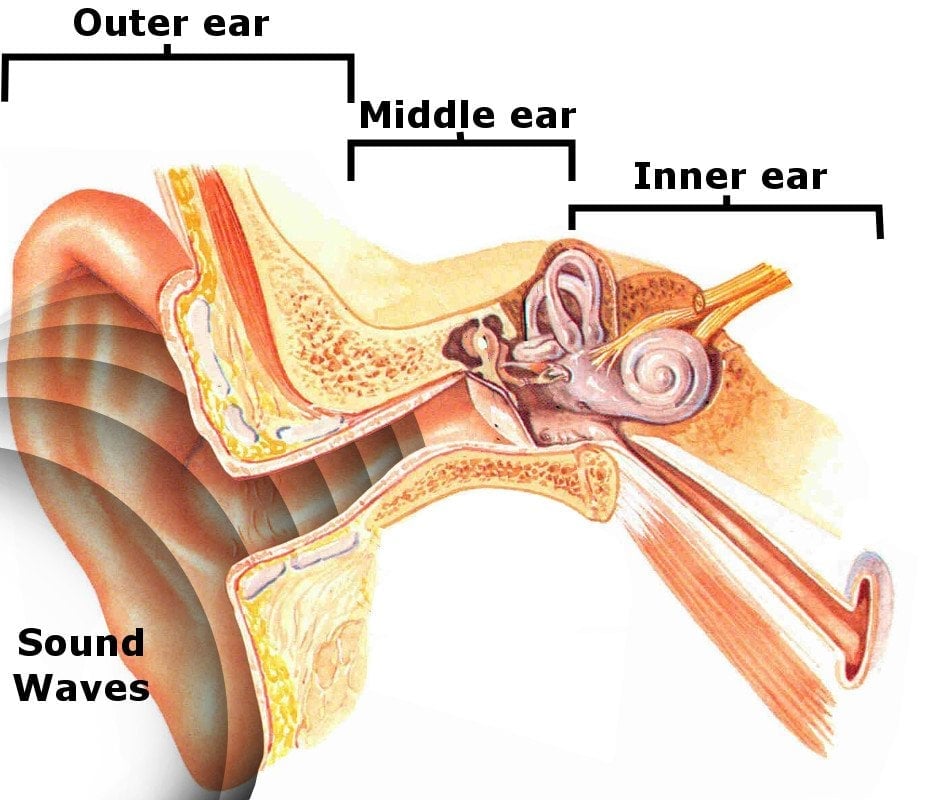
While the first two, i.e., the outer ear and middle ear, are filled with air, the inner ear is filled with fluid. As its name signifies, the inner ear is the innermost segment of the ear, and consists of a maze of passages and tubes (called the labyrinth). It consists of the cochlea, the balance mechanism, the vestibular nerve and the auditory nerve.
The sounds that we hear fall on our ears like waves, which then pass through the outer and middle ear to finally reach the cochlea. The cochlea is a very important part of the inner ear; it looks like a wound-up hose or a snail shell and contains sensory cells that can detect sound.
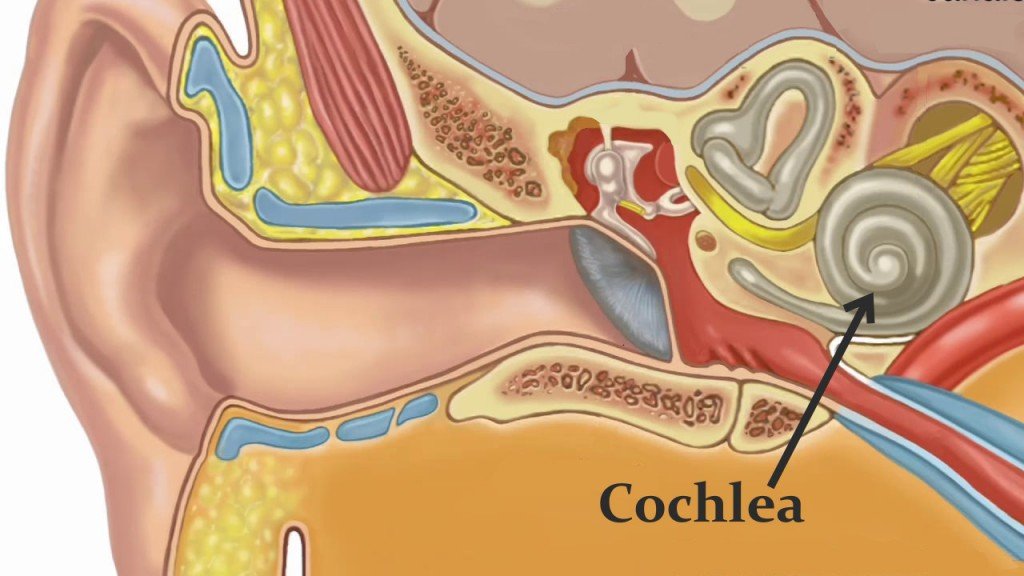
When sound waves reach the cochlea, they are transformed into electrical impulses. These are subsequently transmitted to the brain, which decodes these impulses and ultimately registers it as a sound.
What Is The Basilar Membrane?
The basilar membrane is a structural element that divides the cochlea – which is essentially a long tube – down the middle into two liquid-filled tubes: the scala media and the scala tympani.
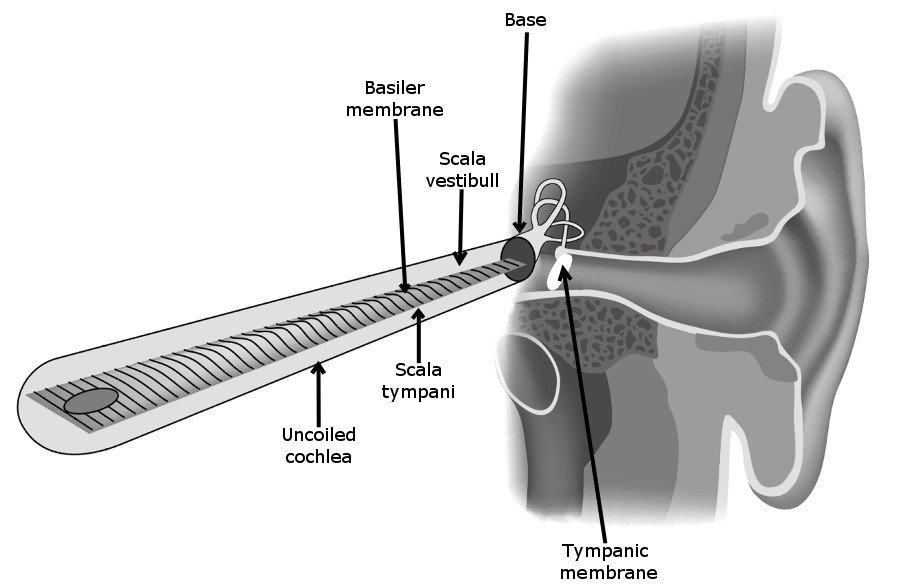
The basilar membrane does not have a uniform thickness or stiffness, because how thick or stiff it is at a given point on its length determines its characteristic frequency (CF), which is a particular frequency value at which the basilar membrane is most sensitive to sound vibrations.
The basilar membrane is the narrowest (0.08-0.16 mm) and most stiff at the base of the cochlea, and the widest (0.42-0.65 mm) and least stiff at the apex. Note that low-frequency sounds localize near the apex of the cochlea, while high-frequency sounds localize near the base. This sort of non-uniformity in the structure of the basilar membrane facilitates high-frequency sounds moving only a small region of the basilar membrane near the stapes (a small bone in the inner ear), whereas low frequencies cause almost the entire membrane to move.
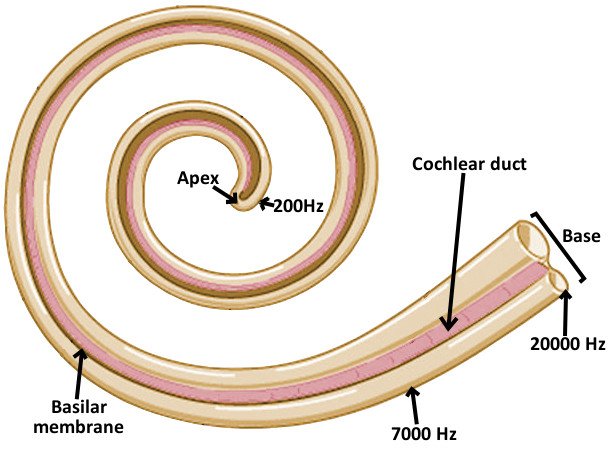
The basilar membrane has more than 10,000 sensory hair cells attached to its surface. These are not the hair that we all have on our heads, but rather a type of mechanoreceptor, meaning that they are activated by movement. These hair cells are exclusively moved by incoming sound waves. The basilar membrane, the tectorial membrane and the hair cells are jointly called the Organ of Corti.
Functions Of The Basilar Membrane
The movement of the basilar membrane is essentially what allows humans to hear through their ears. It works like this: the movement of the basilar membrane causes the hair cells’ cilia to brush gently against the surface of the tectorial membrane. This sort of bending movement prompts the hair cells to fire a neural impulse, telling the brain that a sound wave was detected.
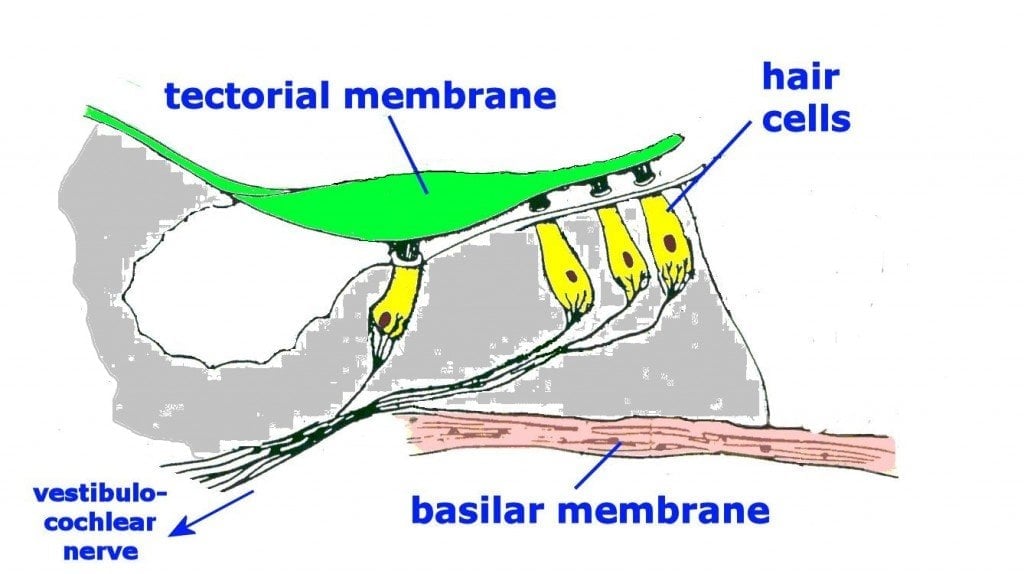
The brain then decodes that neural signal and voila! We hear things!
Apart from serving this critical function of helping us hear, the displacement of the basilar membrane helps to identify the profile of the sound impinging on the ear by acting like a series of band-pass filters. Using a technique called laser interference, these filtering characteristics of the basilar membrane can be studied in detail.
Basilar membrane is just one of many tiny components present inside the ear which work together in perfect harmony to make us hear what the world has to say to us!













